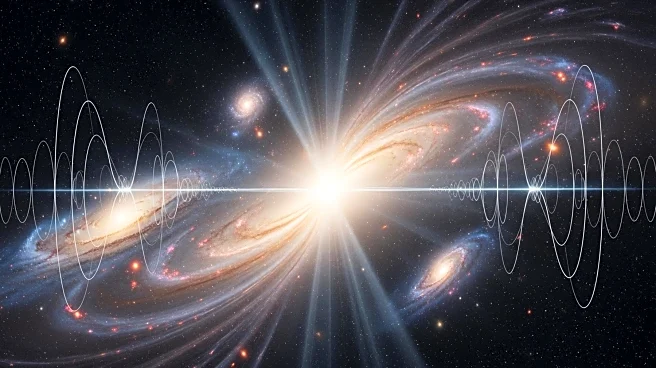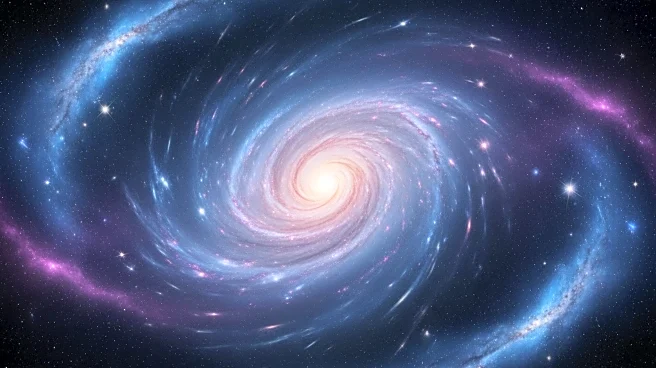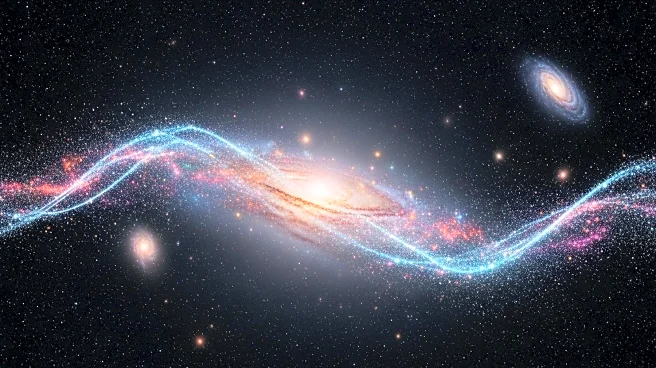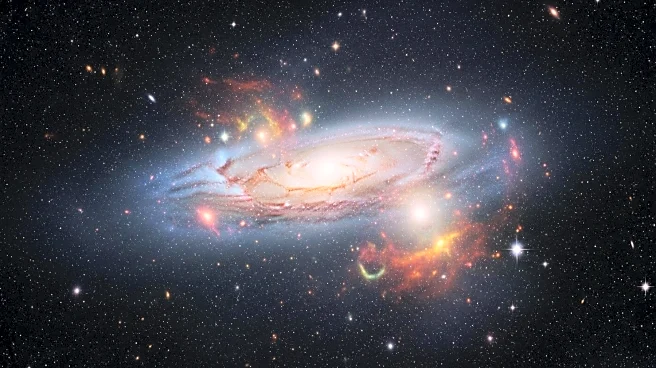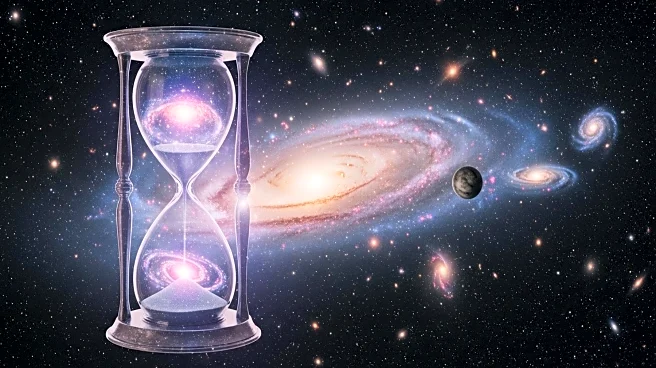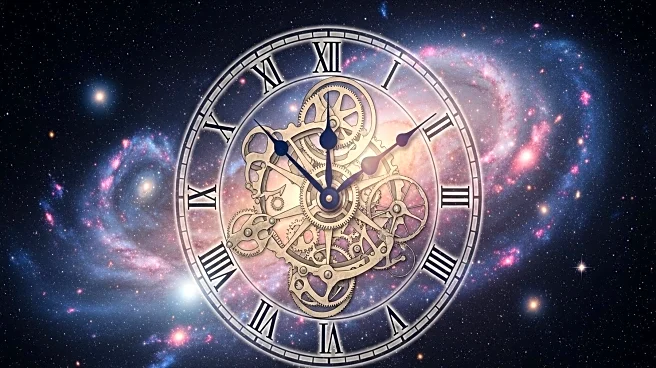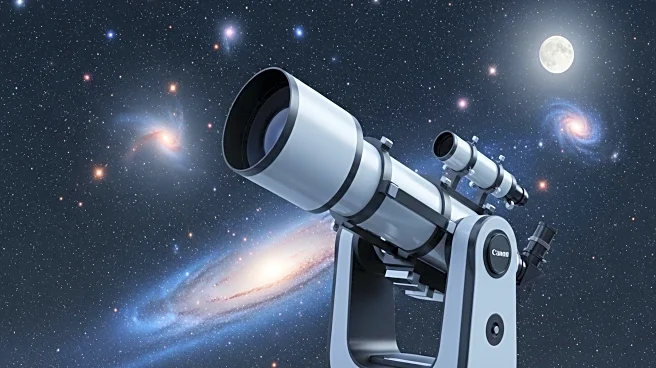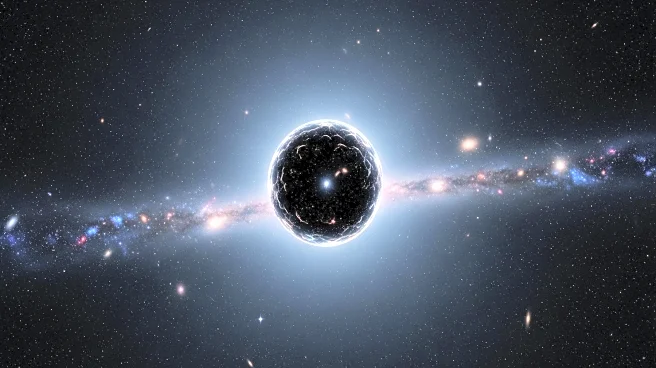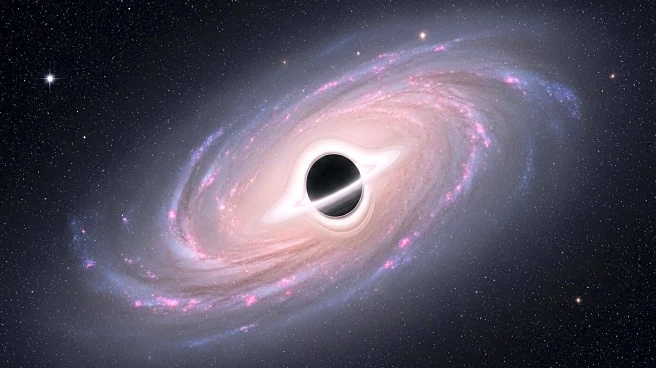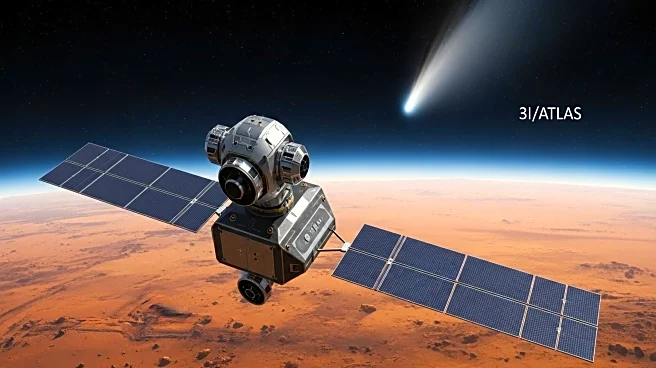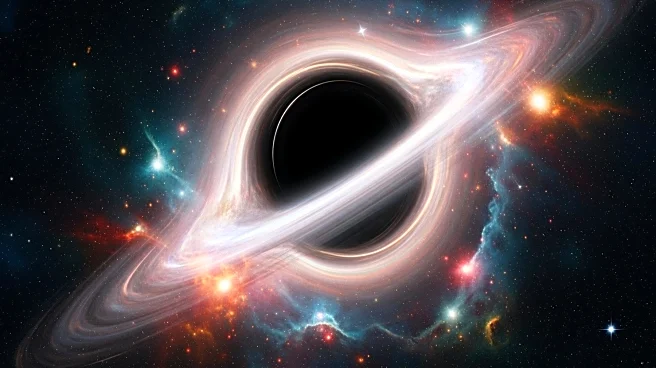What's Happening?
A team of scientists has proposed a new model for the Big Bang Theory that suggests gravitational waves could explain the universe's expansion without relying on the concept of cosmic inflation. Published in the American Physical Society's Physical Review Journal, the model posits that tiny ripples in space-time naturally produced the fluctuations that led to the formation of galaxies and stars. This approach challenges the traditional reliance on a hypothetical inflation particle and offers a simpler explanation for the universe's origins.
Why It's Important?
This new model could significantly impact our understanding of the universe's beginnings and the Big Bang Theory. By eliminating the need for hypothetical particles, the model simplifies the explanation of cosmic expansion and aligns with observable astronomical data. If further studies confirm this model, it could reshape cosmological theories and influence future research in physics and astronomy.
What's Next?
Researchers are eager to see if additional observations and studies will support this new model. The scientific community may conduct experiments and gather data to test the predictions made by the gravitational wave-based model. Success in these endeavors could lead to widespread acceptance and integration of this model into mainstream cosmology.
Beyond the Headlines
The proposal highlights the evolving nature of scientific theories and the importance of questioning established ideas. It underscores the role of interdisciplinary research, combining quantum physics and cosmology, in advancing our understanding of the universe. The model's simplicity and elegance may inspire new approaches to other complex scientific questions.
